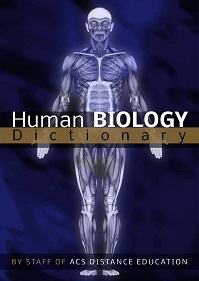
Online Science School - Learn Human Biology via Distance Education
- learn human biology
- work in human health and wellbeing
- excellent for further studies in this field.
- study how the body works
- what factors determine and affect a persons health.
This course is designed for people working or looking to work in the health care industry, or for people who want to have the foundation yet broad knowledge of human anatomy and physiology.
A comment from one of our Human Anatomy and Physiology (1A) students: "Very pleased with the work" L. Lowery